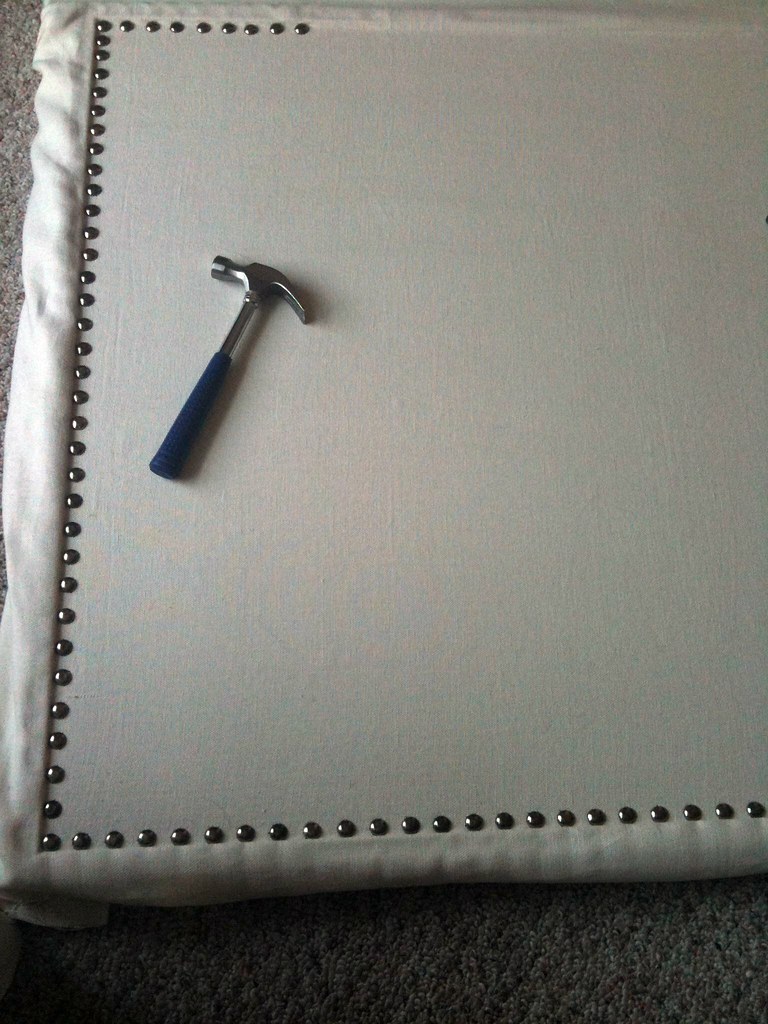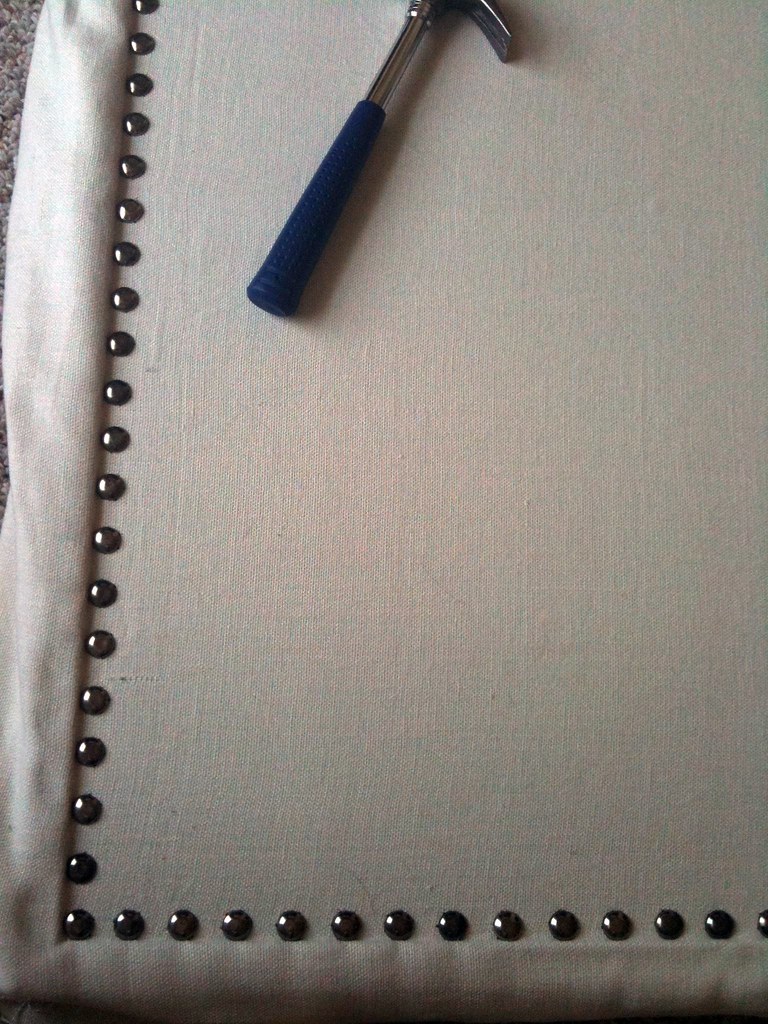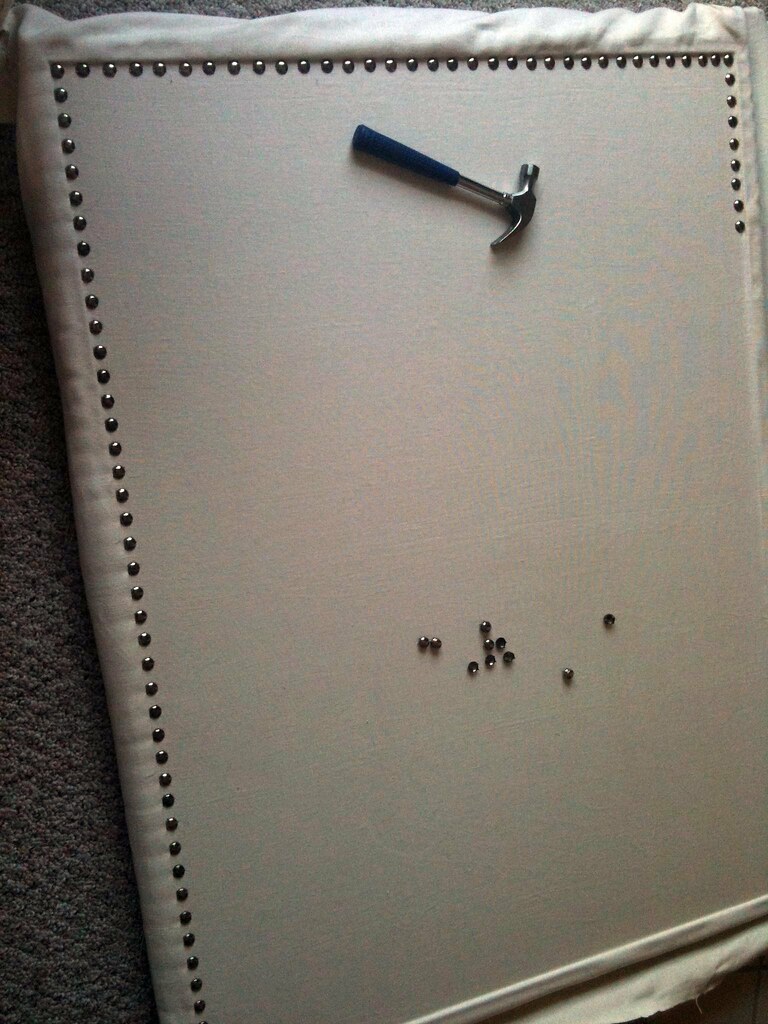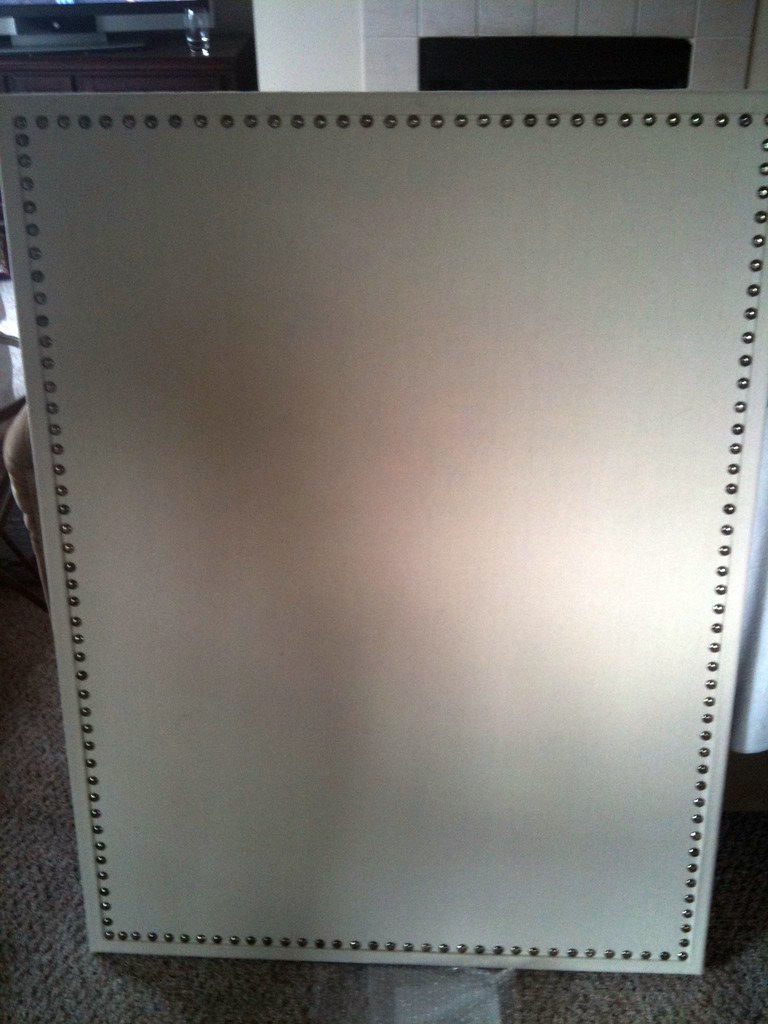For some time, I'd had my eye on the Modern Velvet Headboard ($280) from Urban Outfitters, but I simply couldn't bring myself to spend $315, including shipping, on the thing. I'm not quite pleased with the quality of UO's materials (particularly the velvet they use), and since the headboard would be mostly just a decorative piece, it didn't seem like a sensible purchase. So what's a girl to do? DIY it of course!

It didn't seem like it would be a difficult project, and building my nailhead trim headboard myself would allow me to choose exactly the fabric I wanted, in addition to saving a bundle. So off to Home Depot and the fabric store I went! I picked a greenish gray German velvet to bring some contrast to my light bedding.
Here's are the supplies you'll need:
- Piece of 1/2-inch plywood cut to the width of your bed frame and desired height (54"w for full, 60"w queen, 34"h). $17
- 1/2-inch foam to cover surface area of one side of the plywood (i.e. 54" x 34", etc).$2.50
- 3 yards of 54" batting. A queen-size bag will do. $11
- Staple gun and staples. Borrowed
- 2-3 yards of fabric. (I bought 3 yds. and have some to spare, so 2 yds. will probably do.)$24
- French Natural Nailhead Trim — available at Joann's Fabrics, eBay seller nails-to-you($8.50), DIY Upholstery Supply ($15). $8.50
- Hammer or rubber mallet. Owned
Total Cost: $63!
Now, onto the steps . . .
- Head to Home Depot and have them cut your piece of plywood to size. They'll do it for free. If you want to screw your headboard directly into your bed, rather than hang it from the wall, you may want to have them cut you legs from the scrap plywood.
- Lay your plywood on the floor. Lay the foam on top of the plywood and staple it down, just in the four corners. If it's not a perfect shape, you may need to cut smaller pieces from the roll of foam and arrange them to fit.
- Unroll your batting and stretch it out flat across the floor. If it's already folded in two layers, leave it like that, you'll want two layers. Center the plywood, foam side down, on top of the batting, making sure there's room to fold the batting onto the backside of the plywood.
- Begin stapling the batting to the back side of the plywood, pulling it tautly as you go. When you reach the corners, fold them nicely like you would a present. Continue all the way around.
- Make sure your fabric is ironed or steamed if it has wrinkles.
- Lay your fabric on the floor, front side down. Lay the plywood down on top of it, foam/batting side down, with at least two or three inches of fabric around the edges of the plywood all the way around. Cut off excess fabric if needed.
- Begin stapling your fabric to the backside of the plywood, pulling it tautly as you go. When you reach the corners, be extra careful to fold them neatly like a present.
- Next up: the nailhead trim! The nailhead trim is basically a strip of nailhead that you only have to nail in every fifth nail. This saves a lot of time and makes lining up the nails a cinch. Decide what pattern you're going to go with ahead of time. I chose two rows of trim, but you could easily go with one, or even get more complicated. I wrapped my hammer in a sock so it wouldn't scratch the nailhead, but a rubber mallet will also work.
- Start at the bottom and begin nailing in the trim, checking to make sure it's a straight line as you go. When you get the corners, you may have to snip off some of the trim, and hammer in real nailheads depending on the length and width you're going for. Repeat as necessary until you've completed the trim.
- Fini! If you're going to hang your headboard, I'd recommend screwing in two heavy duty D-ring picture hangers into the back of the headboard, and hanging them from a screw or hook on your wall. If you want to attach the headboard to your bed, you can screw plywood legs to the headboard and them bolt them to your bed frame.
Check out the entire project here.


















